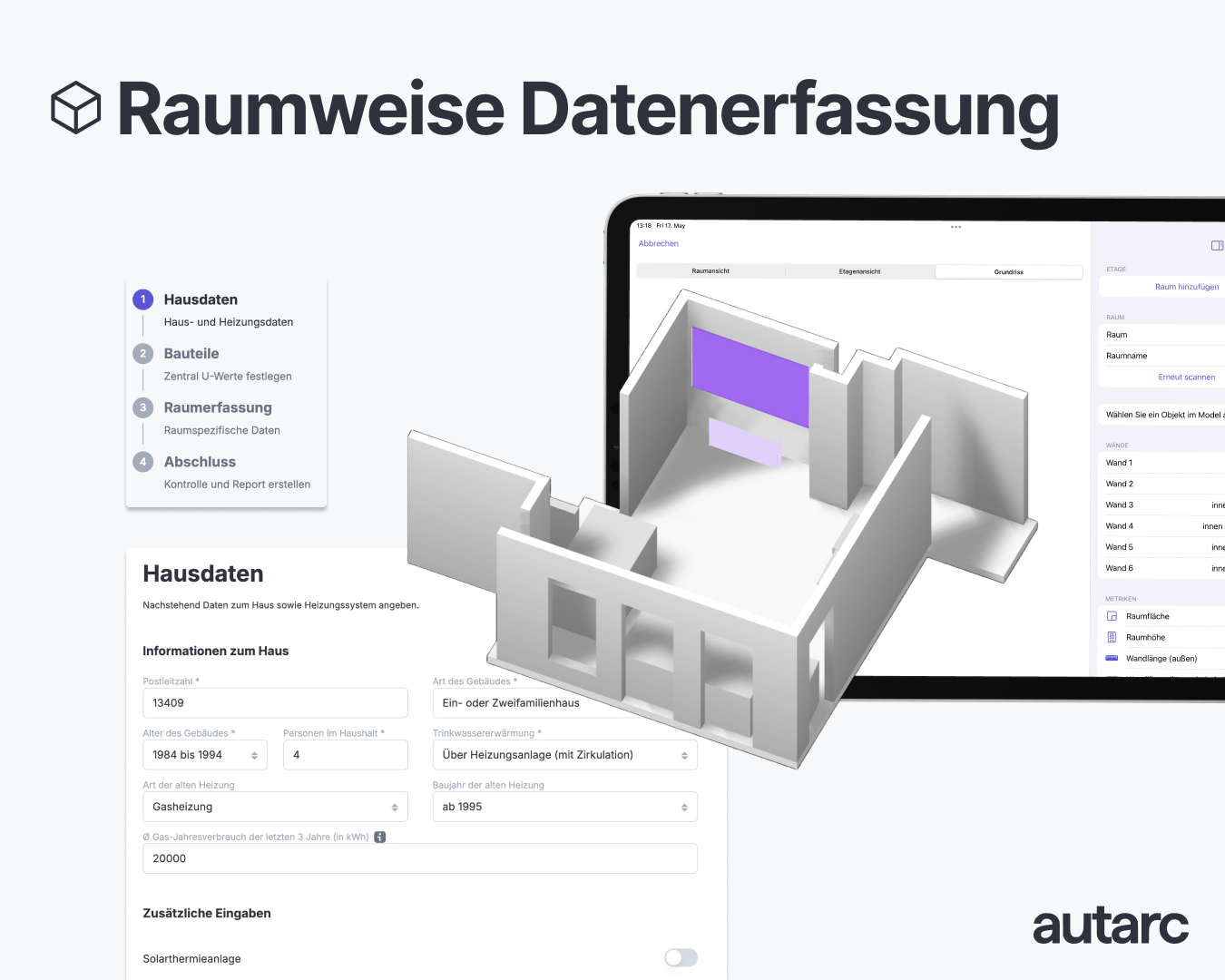What is the difference between an approximate and MCS compliant heat loss survey?

What is the difference between an approximate and DIN compliant heat loss survey?
An exact heat loss survey is crucial for the optimal dimensioning of heating systems. To do this, you can use the approximate or DIN-compliant procedure. This article provides an overview of the differences between the two methods.
What is an approximate heat loss survey?
The approximate heat loss survey provides a quick and easy way to estimate a building's heating requirements. It is based on rules of thumb and standard values without taking individual building data or specific influencing factors into account. This method is particularly suitable for initial cost estimates or simple projects where precise planning is not required.
The calculation is based on living space and a flat rate of heat demand. The simplified formula is:
Heat loss (in watts) = living area (in m²) X specific heat demand (in W/m²)
The specific heat demand is estimated using the following standard values:
For example, for a single-family house of 150 square meters, the following values are obtained:
.png)
What is the heat loss survey in accordance with DIN 12831?
A MCS compliant heat loss survey follows a standardised procedure and takes into account all relevant influencing factors. These include building geometry, room sizes and the heat transfer coefficient (U values) of the individual components such as walls, windows and doors.
Thanks to this detailed procedure, the calculation enables the exact dimensioning of the heating system. This prevents over or underdimensioning and ensures that the heating system works efficiently and saves energy. Although the process is time-consuming and costly, it provides reliable results
What is the difference between the two methods?
The biggest difference lies in accuracy and effort. The recommended method provides quick results, while the DIN-compliant calculation provides precise values for individual buildings.
When does which method make sense?
The approximate heat loss survey is particularly suitable for initial cost estimates or simple projects, such as heating replacement, which do not require detailed planning. The DIN-compliant heat loss survey, on the other hand, is the right choice for smaller, standardized and larger projects that require precise dimensioning of the heating system. It ensures that the heating system is optimally designed and achieves maximum energy efficiency.
Why is the exact heat loss survey important?
A precise heat loss surveyis the basis for an efficiently planned and operated heating system. It offers numerous benefits:
- Appropriate sizing of the heating system: An exact calculation ensures that the heating system is neither oversized nor undersized.
- Energy efficiency and cost reduction: A demand-oriented system consumes less energy and lowers heating costs in the long term.
- Even heat distribution: A precise heat loss survey ensures that all rooms are heated reliably and evenly.
- Avoiding incorrect planning: The precise calculation prevents unnecessary improvements and additional costs during installation and operation.
- Basis for funding: For new buildings and renovations, a heat loss survey is often required by law and a prerequisite for government funding programs.
Which factors influence the heat loss?
The heat loss depends on several factors:
- heat transmittance the window frames and glazing
- Room heights, construction and use of the rooms
- insulation quality the building envelope
- Count, size, and orientation the window
- Location and location of the building (e.g. direction, shading)
- Ventilation losses due to planned air exchange or leaks
What is the difference between heat loss survey and actual energy consumption?
The heat loss survey indicates the theoretically required heating output so that the building remains constantly warm. It is based on maximum heat losses under extreme conditions. The actual energy consumption, on the other hand, depends on the behavior of residents, the use of space and external factors such as solar radiation.
Who carries out the heat loss survey?
The heat loss survey is carried out by specialized specialists. They have the necessary knowledge and the appropriate software to implement the calculation precisely and in accordance with standards.
- Heating installers and specialist companies They often calculate the heat loss as part of the planning and dimensioning of a new heating system. Especially for new buildings and renovations, they ensure that the heating output is optimally tailored to the requirements of the building. In addition, they ensure the proper installation of the system.
- energy consultant Calculate the heat loss often as part of state-sponsored renovation measures. They not only prepare the heat loss survey, but also check the energy quality of the building and draw up renovation plans. They also advise on suitable funding options for energy measures and assist with the application process.
- For larger projects, take over Planning offices or TGA planners (Technical building equipment) the heat loss survey. They take into account the complex requirements of the building and develop holistic concepts for heating and building technology.

Plan efficiently with modern heat loss survey!
Optimize your heating planning with a DIN-compliant heat loss survey! Take advantage of this opportunity and book a free demo. Convince yourself of the benefits without obligation and experience how easy and efficient our calculation tools make your work easier.
%25203%2520(1).webp)